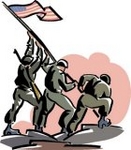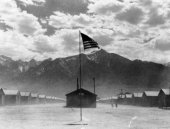
Worksheets and No Prep Teaching Resources
Reading Comprehension Worksheets
World War II

World War II
 Worksheets and No Prep Teaching Resources Reading Comprehension Worksheets World War II |
 World War II |
| edHelper's suggested reading level: | grades 9 to 12 | |
| Flesch-Kincaid grade level: | 7.85 |
|
The "Japanese Problem" of WWII - A Struggle of Fear and Freedom
By Toni Lee Robinson |

|
 1 In early December, 1941, Japanese and American ambassadors faced each other over conference tables in Washington, D.C. The two countries negotiated to resolve conflicts over Japanese encroachment in the Pacific. On Sunday, December 7, word came of the devastating strike on Pearl Harbor by Japanese bombers and submarines. The attack left America stunned and grieving.
1 In early December, 1941, Japanese and American ambassadors faced each other over conference tables in Washington, D.C. The two countries negotiated to resolve conflicts over Japanese encroachment in the Pacific. On Sunday, December 7, word came of the devastating strike on Pearl Harbor by Japanese bombers and submarines. The attack left America stunned and grieving. |
Create Weekly Reading Books
Prepare for an entire week at once! |
| Leave your feedback on The "Japanese Problem" of WWII - A Struggle of Fear and Freedom (use this link if you found an error in the story) |
 |
World War II
|
 |
High School Reading Comprehensions and High School Reading Lessons
|
 |
Social Studies
|
 |
United States
|
|
|
|
|
 | Fifty States Theme Unit |
 |
Document Based Activities |